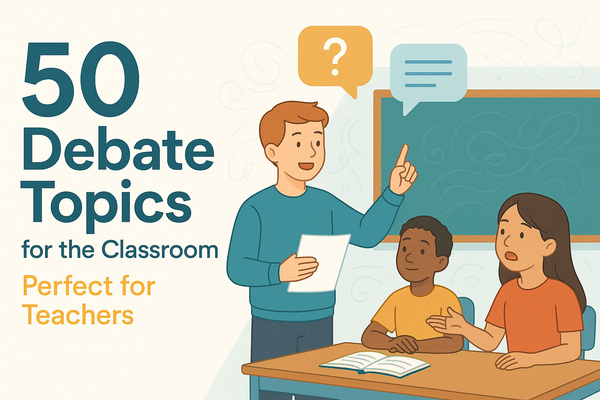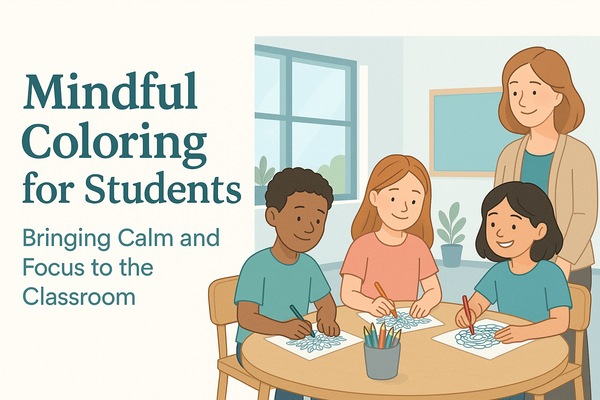Transform Your Learning Space with Creative Classroom Desk Arrangements

Arranging classroom desks is like shaping how students learn and collaborate in a classroom. Deciding as a teacher if you should stick to traditional classroom desk arrangement or give it a fresh look is a critical decision, as desk arrangements can have a huge impact on student engagement.
We will discuss 7 creative classroom desk arrangements that will transform your learning space and positively impact students’ focus. Whether you're looking for a collaborative arrangement, a style that promotes inclusivity, or a setup to keep distractions away, we’ve got you covered.
Top 7 Classroom Desk Arrangements Teachers Must Try
If you are a teacher figuring out the right classroom desk arrangement for your students, the following 7 desk arrangements are a must-try.
Classic Rows with a Twist
When you picture a traditional classroom, rows of desks come to mind. It has been the true arrangement of desks for decades, and it works well in most classroom setups. However, the modern twist many teachers are adopting into this setup makes it more adaptable to today’s collaborative teaching styles.
Instead of lining up desks in single, isolated rows, consider pairing them in groups of two or three or even creating a long row of connected desks. This arrangement doe not only maintains the neatness of setup but also encourages a sense of community in students. The setup will still be in the form of rows and will minimize the distractions that can arise due to interactive arrangements.
You can easily adapt this row setting to flexible seating, but this is hands down the best setting if you want students to be entirely focused on the lecture. Lectures are best delivered when students are directly facing teachers, so if you have no interactive activity planned, you should stick with the row arrangement.
Collaborative Groups for Teamwork
Arranging desks into groups is a popular choice for teachers to foster collaboration and build a sense of community in the classroom. This layout makes students sit close enough to collaborate in groups and discuss ideas during shared tasks. Groups can be as small as 2-3 desks and as large as 6 desks.
Smaller groups allow for more walking space between clusters, giving you better access to each student and making classroom management easier. Larger groups will be ideal for classes where you want to maximize seating arrangement and accommodate everyone.
However, one challenge with group arrangements is the potential for excessive chatter or distractions. This is where your “teacher judgment” comes into play. Carefully consider which students work well together and which combinations might need a little extra monitoring. You may also just plan this desk arrangement for days with group activities.
U-Shaped and S-Shaped Arrangements
U-shaped and S-shaped desk arrangements are a fantastic way to create a sense of unity in the classroom while also keeping every student focused on the front. The U-shape is a classic choice, as it gives every student an unobstructed view of the teacher. It also creates a semi-open space in the classroom, which can be used for interactive activities.
The U-shape setup makes discussions easier, as students can see each other. However, this setup may limit the number of desks that you can use, so you must consider yoru classroom size before opting for this arrangement. On the other hand, S-shape offers a creative twist where desks are arranged in a wave-like pattern.
This S-shape setup is appropriate for classrooms with limited space. Both layouts are a great way to promote a sense of connection. While these designs may help manage a classroom, you need to shuffle out the seating to balance out the seating arrangement.
Wall-Aligned Desks for Optimizing Space
Arranging desks or tables against the wall is an excellent option for classrooms where space is at a premium. This classroom desk arrangement saves room and gives students a view of the outdoors if the walls feature windows. By pushing desks against the wall, you are freeing up the space in the center of the classroom.
For smaller classrooms, this setup makes the teacher's navigation easier, and they can see every student clearly and interact with them. It can also work well for art or craft-based lessons, as it keeps materials contained and provides easy cleanup access.
However, wall-aligned desks may not be the best choice for group work or collaborative learning since students are not naturally positioned to interact with one another. However, if this arrangement is working for you, you can leave space in the center of the room for interactive activities.
Stadium-Style Seating
Stadium-style seating is just a modification of traditional rows desk arrangement. It is designed with a slight incline or tiered angle, just like seats in a theatre. This layout focuses all desks toward a single point in the room, usually the teacher or a presentation area. This desk arrangement is more beneficial for older students who benefit from lecture-based learning.
One of the standout advantages of stadium seating is its ability to provide a clear line of sight for both students and teachers. All students face the teacher in this arrangement, making classroom management much simpler and easier for teachers.
While stadium seating supports structured lessons and independent work, it may not be ideal for collaborative or interactive activities. You can go for this classroom desk arrangement if you want to optimize space and maintain an engaged learning environment,
Double E Desk Arrangement
The unique double E desk arrangement is a layout that works well in smaller classrooms. This unique structure arranges desks in two parallel rows like the letter “E” and leaves the spaces open, which can provide extra room for group work or simply allow movement in the classroom.
The parallel structure ensures that every student has a clear view of the front of the room, making it ideal for lectures, presentations, or guided lessons. The open area can be used for interactive work.
With clear paths between the desks, it becomes easier for teachers to walk around and provide support to students. The Double E arrangement also promotes a sense of order and minimizes clutter, which is particularly important in tight spaces.
Circle Seating for Interactive Learning
In this layout, all student desks are arranged in a circular or oval pattern, with no clear front of the room. This creates an atmosphere that encourages open discussions, peer feedback, and active participation.
One of the greatest benefits of circle seating is its ability to promote communication. Since all students face each other, group discussions and brainstorming sessions are more natural. This seating arrangement works well for seminars and debates or any lesson that requires input from students.
However, while circle seating is excellent for collaboration and open discussions, it may not be the best option for tasks that require individual focus or attention. For balance, you could use the circle seating for group activities and switch to rows for a more structured lesson.
Factors to Consider When Choosing Classroom Desk Arrangement
You should take care of several key factors when finalizing your classroom desk arrangement, keeping in mind your teaching style and your student’s needs.
1. Classroom Size and Layout
Your classroom size is the most important factor you need to consider before arranging desks. The size of the room will help you decide how many desks can be comfortably placed in the classroom. It is very important to ensure that you do not clutter the classroom or make it impossible for yourself or your students to move around freely.
2. Number of Students
The number of students in your class will directly impact your desk arrangement decisions. In a small classroom, you can utilize the space creatively; in larger spaces, it is important to maximize the use of space. With more students, having all desks facing the front may make classroom management easier, while smaller groups might encourage more one-on-one interaction and collaboration.
3. Teaching Style and Lesson Objectives
Your teaching style plays a significant role in how you choose to arrange desks. For example, if you place more focus on lectures, you should arrange the classroom in a way where everyone is facing the front. However, if your teaching style is more collaborative and interactive, you may prefer desk arrangements such as pods, U-shapes, or circles.
4. Special Needs and Accessibility
Ensuring that you opt for a desk arrangement that supports the learning needs of all students is very important. When planning your desk arrangement, make sure the setup accommodates students who may need additional space, specific seating, or a clear line of sight to the board. Additionally, having flexible seating options that can be rearranged easily is crucial for meeting the varying needs of all students.
Tips to Smoothly Transition Between Arrangements
Transitioning between classroom desk arrangements is important for all your students. Here are some practical tips to make shifting between desk arrangements smoother, quicker, and more efficient.
- One of the best ways to make transitions between desk arrangements easy and collaborative is by involving your students in the process.
- To help smoothen the transition, use visual guides or floor markings to indicate where desks should be placed in each arrangement.
- To ensure that the transition is quick and efficient, establish clear expectations and practice the process a few times with your students or set a time limit to make the process smooth.
Conclusion
Your classroom’s desk arrangement is more than just placing seats and desks; it is a powerful tool to shape how students engage, interact, and learn. The right setup can transform your classroom into a dynamic learning environment. Every class is different, and flexibility is key to creating a space where both you and your students thrive.




